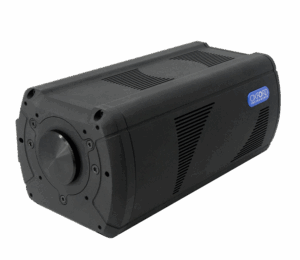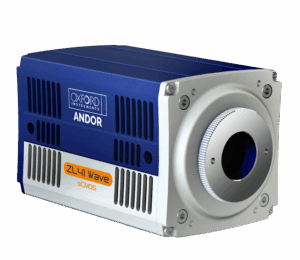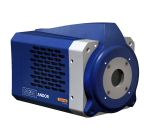Description
Marana sCMOS Camera – Ultimate Sensitivity Back-illuminated sCMOS Camera for Astronomy and Physical Sciences
Marana is Andor’s latest high performance sCMOS camera platform for Astronomy and Physical Sciences. It launches with the large field of view Marana 4.2B-11 back-illuminated sCMOS model, featuring 95% Quantum Efficiency (QE) and market-leading vacuum cooling to -45 °C.
– 95% QE & -45 °C cooling – Most sensitive back-illuminated sCMOS available
– 4.2 Megapixel / 32mm sensor – perfect for astronomy
– 135 fps full frame (faster with ROI) – track fast events without smear
– 1.0 e- Low Noise Mode – for the most light-starved conditions
– Long Exposure Capability – photometry over a wider exposure range
– > 99.7% linearity – superb quantitative accuracy across full dynamic range
– Vacuum longevity & quality – no moisture on sensor, no QE decay
Marana is Andor’s latest high performance sCMOS camera platform, ideal for diverse applications within the physical sciences such as astronomy, Bose Einstein Condensation, quantum optics, hyperspectral imaging, neutron tomography and fast spectroscopy. Both Marana models feature 4.2 Megapixel sensors, 95% Quantum Efficiency (QE) and market-leading vacuum cooling to -45 °C, making Marana the most sensitive back-illuminated sCMOS platform available. Andor’s unique capability to deliver the ultimate in sCMOS sensitivity means Signal to Noise can be optimized under light starved conditions, ideal for tracking smaller orbital objects, spectroscopic detection of trace concentrations and BEC fluorescence detection of discrete numbers of atoms/ions. Higher sensitivity also means that exposure times can be shortened, facilitating faster frame rate measurements of dynamic processes.
Crucially, Marana sCMOS reads out 4.2 Megapixel high resolution arrays in less than 50 milliseconds, while maintaining very low read noise; hundreds of times faster than a similar resolution CCD detector.
The innovative ‘dual-amplifier’ approach to extended dynamic range is ideal for accurately visualizing and quantifying challenging scenes that have both extremely weak and bright regions, such as solar measurements and spectroscopic materials characterisations. Furthermore, to achieve best-in-class quantification accuracy, Andor have implemented enhanced on-head intelligence to deliver market-leading linearity of > 99.7% across the whole dynamic range, ideal for accurate photometry.
Marana 4.2B-11: This large field of view option utilizes a unique Anti-Glow Technology approach that enables one to usefully access the entire 2048 x 2048 array, offering an impressive 32mm sensor diagonal, which in combination with fast frame rates up to 24 fps (16-bit) and 48 fps (12-bit), renders the camera ideal for large sky scanning astronomy applications such as orbital debris tracking and Near Earth Asteroid detection. It is also ideal for dense multi-fiber hyperspectral applications. Marana 4.2B-11 also comes with a choice of QE profiles, the UV enhanced option (‘BU’) extending usefulness towards specific application requirements between 260nm and 400nm.
NEW Marana 4.2B-6: This high speed model achieves 135 fps (High Speed Mode) and is the most sensitive back-illuminated camera available for imaging or spectroscopic applications requiring fast frame rates, such as Quantum Gas dynamics, fast high resolution spectroscopy, hyperspectral imaging and non-destructive imaging of sample dynamics via X-Ray or Neutron Radiography. The smaller 6.5 μm pixel is better suited to resolution matching across many laboratory-based optical imaging configurations, as well as in echelle spectroscopy.
The Marana platform can be readily adapted to Adaptive Optics wavefront sensing. Not only is it capable of producing hundreds of fps with ROIs, it is also specifically architected to minimize data transfer lag. Furthermore, the fast frame rate of Marana can be harnessed to massively extend dynamic range and effective well depth through fast stacking (accumulation) of images or spectra.







